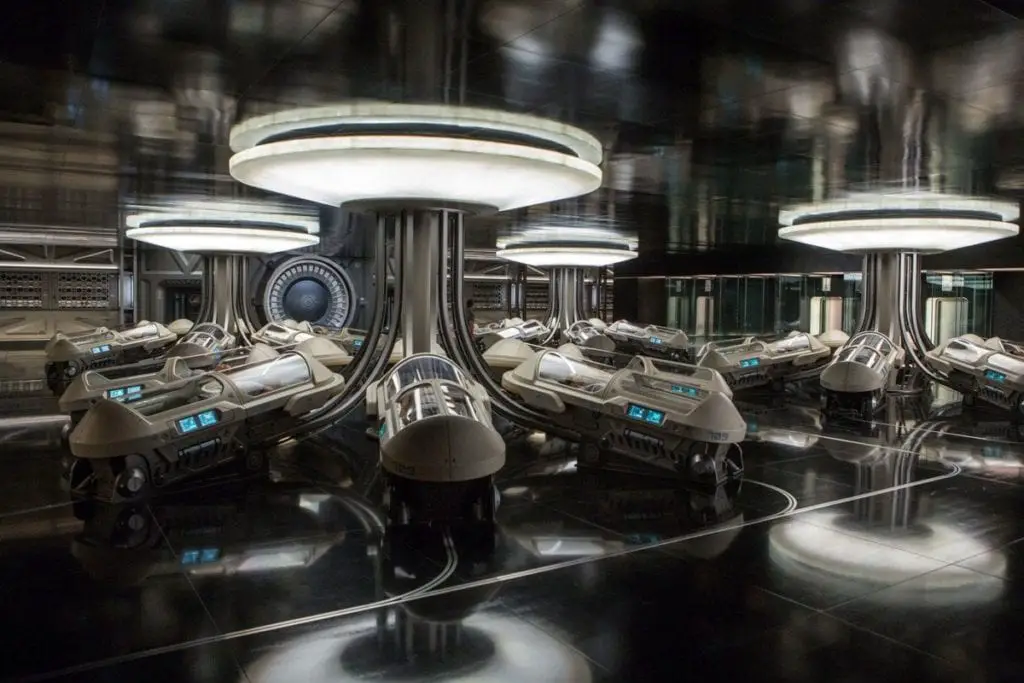
If you clicked into this article hoping to discover a top-secret file exposing what has been hidden from us about hypersleep and interstellar travel or to find out if the technology from the films “Alien,” “Prometheus,” “Passengers,” etc., is real, you would be sorely disappointed.
The reality for hypersleep is that in all its science fiction glory, we are nowhere close to reproducing the “suspended animation,” or properly known as torpor-induced hibernation from our favourite films. The closest we have reached was a 2014 proposal to NASA by SpaceWorks Engineering for a hypothetical habitat called “Torpor Inducing Transfer Habitat For Human Stasis to Mars.”
What is Hypersleep?
However popular, the term ‘Hypersleep’ exists only in science fiction and is commonly defined as “a form of suspended animation in which the body’s functions are not merely slowed down but halted entirely.”
When it comes to reproducing hypersleep technology outside the realm of science fiction, four concepts are usually at the forefront of scientific investigation and experimentation: Cryogenics, Cryonics, Cryopreservation, and the restoration of cryopreserved biological structures (e.g., organs, cells, tissues, etc.).
Cryogenics and Cryonics
Before we begin, it has to be clarified that although similar at first glance, Cryonics is NOT the same as cryogenics. Scriptwriters, Novelists, TV writers for pop culture often contribute to this misunderstanding by mistakenly referencing cryogenics as body freezing.
This is important as Cryogenics and Cryonics serve as great foundational knowledge for introducing cryopreservation and restoration, which are the hallmark of modern ‘hypersleep’ technology.
Cryogenics is a branch of engineering that focuses on the production and effects of very low temperatures on the behavior of different materials, and the term has been used over the years to refer to temperatures below approximately -150°C.
A common example of cryogenics is the liquefaction of permanent gases such as oxygen (-183.0°C), nitrogen (-195.8°C), hydrogen (-252.9°C), or helium (-269.0°C), in which are referred to as cryogenic fluids. Liquid nitrogen, for example, occurs when nitrogen molecules are compressed so closely together that the gas heats up. Next, the gas is dropped in pressure and forced to expand through a throttle or valve. When the high-pressure gas expands, considerably cooling happens, and eventually, it becomes a very cold liquid.
A liquid is a state of matter where atoms and molecules are continuously bumping into and communicating with their neighbors… Gases chill by relaxing. This happens when there is freed up space and reduced pressure, or stress on them.
Jake Leachman
But… we are getting off topic here.
Cryonics, as defined by the Cryonics Institute, involves “cooling a recently deceased person to liquid nitrogen temperatures to keep the body preserved indefinitely.” The ultimate goal for the cooled patient is to stay preserved until future science can replace vital organs or tissues to bring them back to life.
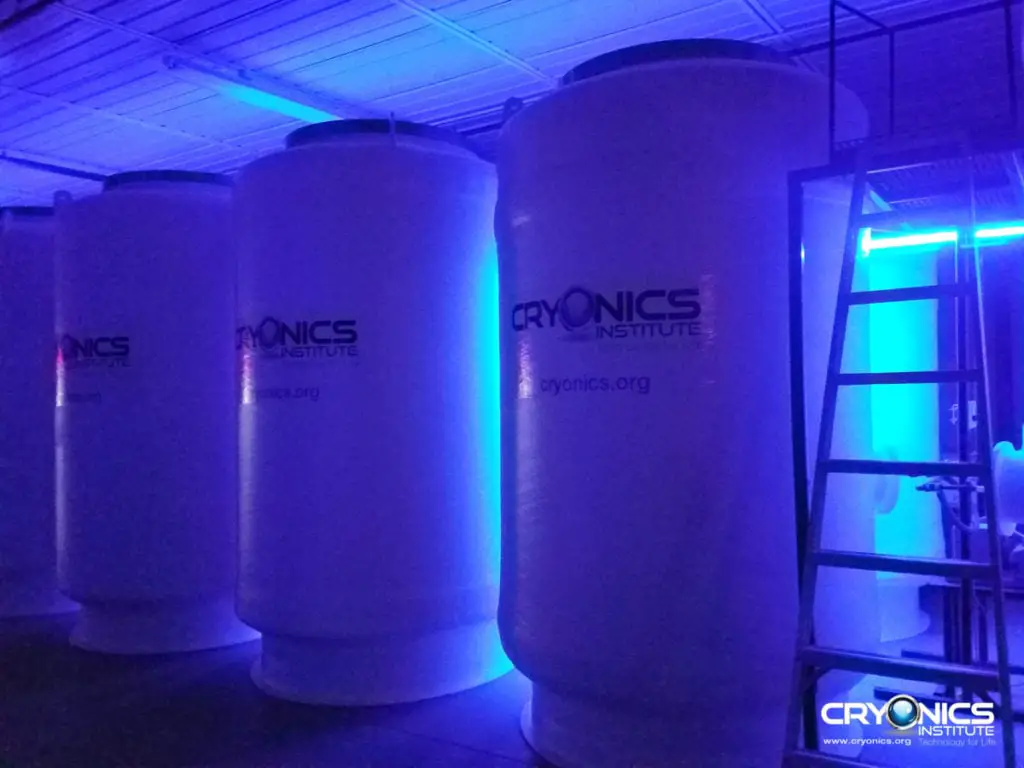
Cryonics research and technology pave the way to achieve hypersleep (or cryosleep) in hopes that living humans can be safely cryopreserved one day. It is currently only legal to perform cryonics on patients that have been declared legally dead, as present-day cryopreservation techniques cause cell damage we cannot hope to repair with modern technology.
The success of cryonics solely depends on the arrival of future molecular repair technologies (ex. nanotech) to reverse any potential cell damage caused by our lack of knowledge in the field of cellular and molecular biology.
Hypersleep: Cryopreservation and Restoration
With an understanding of cryogenics and cryonics out of the way, we can finally get into what you’re all here for…
HYPERSLEEP.
The concept of hypersleep is often referred to in the scientific community as cryosleep, as the process of putting the body in a state of “suspended animation” involves preserving the body in very cold temperatures that halts all chemical or enzymatic activity in the cells, which essentially eludes the need for any biological functions.
Yes, this is what’s known as cryopreservation – “a process that preserves organelles, cells, tissues, or any other biological constructs by cooling the samples to very low temperatures … as biological and chemical reactions in living cells are dramatically reduced at low temperature” (7). However, it has to be noted; cryopreservation does not mean the material will be 100% frozen.
So, why do we cryopreserve instead of freezing everything?
Unfortunately, the method of freezing and thawing biological material can cause ice crystal formation, osmotic shock and membrane damage that eventually leads to cell death, which is fatal for most living organisms.
On the other hand, the method of cryopreservation seeks to reach low enough temperatures without causing such additional damage to the cells.
Cryopreservation aims to reduce freezing injury through the use of cryoprotectants, which are molecules that are used to alter the freezing behaviour of cells, such as the rate of water transport, nucleation and ice crystal growth. Generally speaking, cryoprotectants should be biologically acceptable, able to penetrate cells and have low toxicity.
The restoration and recovery of cryopreserved materials are straightforward, to say the least. Although there have been no attempts to restore a cryopreserved human, frozen cells in a clinical environment can be thawed in a 37°C warm water bath with the cryoprotectants removed subsequently via centrifuge.
The Current Feasibility of Hypersleep Technology
Unfortunately, cryopreservation technology in its current state is not a viable option to induce cryosleep/hypersleep safely for a living human. Cells indeed metabolize almost nothing at low temperatures, such as -196°C, and cryoprotectants prevent most cell damage, but it inevitably has side effects.
Genetic drifts and changes for lipid and protein structure in the cell could result in the impairment of cellular activity and structure at such low temperatures, which would actually not be a problem if the cells could be preserved perfectly.
The perfect preservation of cells could be attained if there were no limit to the amount of cryoprotectants used. However, cryoprotectants themselves are damaging to cells when used in high concentrations. Some might even alter chromosome stability which leads to an increased risk of tumour formation (7).
There are many types of cryopreservation processes, but vitrification is often used to preserve an entire body. During this process, cryoprotectants are mixed into the cells before cooling, which instead of crystallizing into ice from the low temperatures, solidifies into a noncrystalline glass.
Although this might be a viable process for cryonics, as it hopes for future molecular technology to rescue their cryopreserved patients from previous ailments and cell damage; vitrification is a dangerous process to introduce for humans that remain alive as we still have not figured out how to achieve the best survival rate for all cells and tissues, as well as methods of removing the injected cryoprotectants after restoration.
100% survival rate is fully dependent on the cell/tissue volume, cooling rate, warming rate, and cryoprotectant concentration, which should all be optimized depending on the different cell types and tissue environments, as heat travels differently within different systems of varying macroscopic physical dimensions.
Negatives aside, new cryoprotectants are constantly being investigated to find suitable replacements with lower inherent toxicity. More research is needed to understand better the chemistry and biological mechanism behind freezing and thawing.
But… Is cryogenics the only way to induce the state of “suspended animation” required for hypersleep?
Interestingly, there might be another way.
Hypersleep For Interstellar Travel
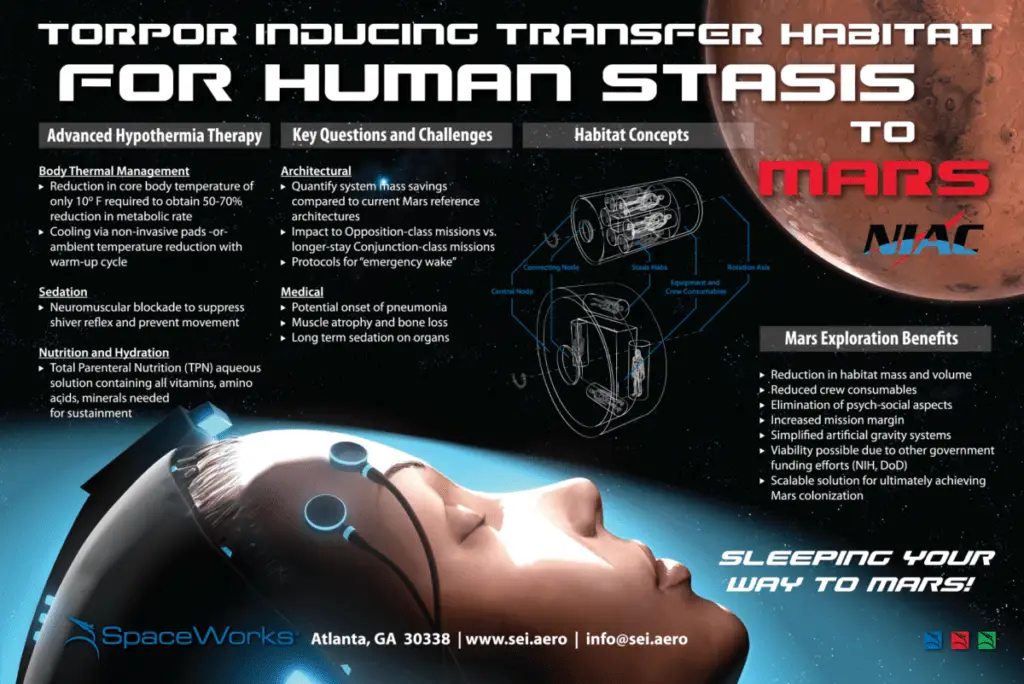
In 2014, SpaceWorks Engineering proposed a project named “Torpor Inducing Transfer Habitat For Human Stasis To Mars” from the premise that suspended animation acts as a promising solution for long-duration spaceflight.
This design envisions “a very small, pressurized module that is docked around a central node/airlock permitting direct access to the Mars ascent/descent vehicle and Earth entry capsule by the crew.”
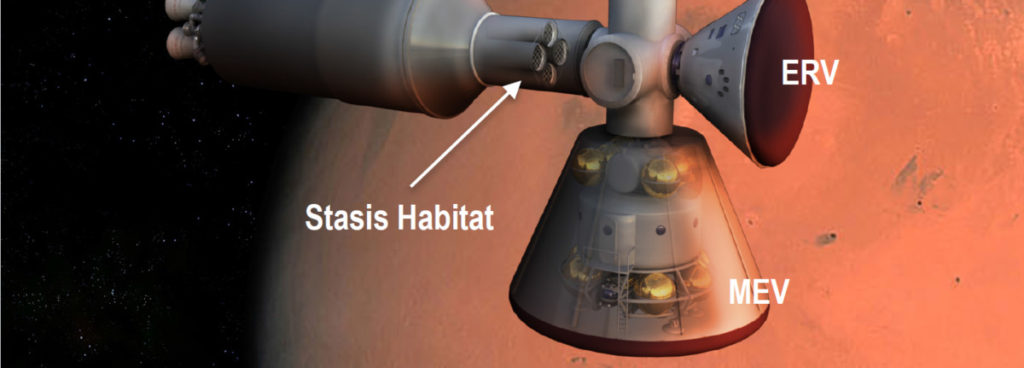
As research for the full cryopreservation and restoration process continues, SpaceWorks looks to other methods for “inducing deep sleep states (i.e. torpor) with significantly reduced metabolic rates for humans over extended periods of time.”
The solution SpaceWorks offered in their 2014 symposium presentation states:
Place crew in inactive, low-metabolic Torpor state for mission transfer phases by leveraging evolving medical advances in Therapeutic Hypothermia and Total Parenteral Nutrition.
Torpor – A sleep-like inactive state with a reduction in human metabolism for a prolonged period of time. This can be medically accomplished through therapeutic hypothermia.
Therapeutic Hypothermia (TH) – A medical treatment that lowers a patient’s body temperature, which with our current medical knowledge, is used to help reduce the risk of ischemic injury (restriction in blood supply causing a shortage of oxygen) to tissues following a period of insufficient blood flow.
Total Parenteral Nutrition (TPN) – A method of feeding a person intravenously by nutritional fluids containing lipids, amino acids, dextrose, electrolyte, vitamins and trace elements via a catheter (flexible tube) into the veins.
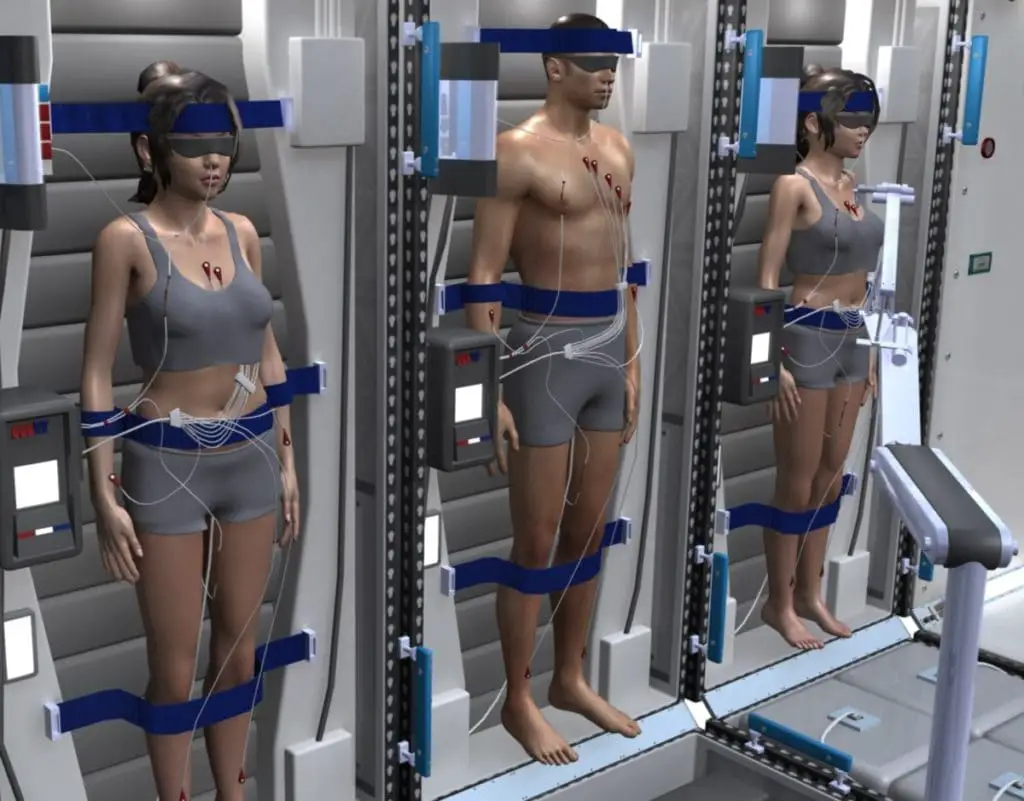
Image by SpaceWorks
Patients in therapeutic hypothermia are generally cooled to a mildly hypothermic state (core temperature between 32 to 34°C / 89 to 93°F). This temperature-based artificially induced “hibernation” can either be achieved through invasive cooling (infusing cooled IV fluids) or conductive cooling through the use of gel pads placed on the body or with evaporative gases in the nasal or oral cavity.
With that in mind, SpaceWorks recommends three possible mechanisms for thermal management of the Mars crews, which are all low mass, low power, and easily automated:
- Invasive – e.g. CoolGard 3000RTM with IcyT catheter by ZOLL medical
- Non-invasive – e.g. RhinoChill SystemTM
- Passive Cooling with Rewarming – e.g. KOALA SystemTM
Although therapeutic hypothermia is a proven treatment for traumatic injuries and avoids the challenges posed by cryogenic freezing, it has not yet been applied for non-critical care purposes, such as inducing torpor in astronauts for prolonged space travel.
The impact of prolonged therapeutic hypothermia treatments still have to be examined as many torpor specific medical challenges have already been identified, including:
- Thromboembolism (Blood Clotting)
- Due to prolonged sleep status and indwelling IVs
- Bleeding
- Due to a decrease in coagulation factor activity
- Infection
- Due to temperature reduction in white blood cell activity
- Electrolyte Imbalances
- Due to decreased cellular metabolism
- Fatty Liver and Liver Failure
- Due to long term Total Parenteral Nutrition usage
- Other Complications (hypo/hyperglycemia, bile stasis, etc.)
- Due to Total Parenteral Nutrition usage and reduced metabolic rate
Although potential solutions have been offered, it is still uncertain about the effects of long-term torpor and Total Parenteral Nutrition usage on crew health and crew functional abilities. Protocols for emergency warming/waking still have to be established and accelerated.
Why Hypersleep?
Besides being a cool concept, has anyone really given any thoughts on the implications of achieving hypersleep for interstellar travel?
Without considering the sociological impacts of “falling asleep” for months and years on end, the success of any future manned missions to different planets and stars rests heavily on the amount of mass we are able to send into space and how it’s distributed.
Anytime you introduce humans, it’s an order of magnitude or two more challenging.
Dr. Bobby Braun, former NASA Chief Technologist
The introduction of a human crew increases the complexity of an interstellar mission drastically as the amount of associated support items needed to ensure the crew’s survival is simply not feasible to bring aboard.
SpaceWorks suggests the ability to induce a hibernative state in a crew (hypersleep) will:
- Reduce the number of mission consumables
- Reduce the pressurized volume required for living quarters
- Eliminate many ancillary crew accommodations (food galley, eating supplies, cooking, exercise equipment, entertainment, etc.)
- Minimize psychological challenges
Such savings can amount to:
- Increase in mass margins, which allow for added subsystem redundancy and improvement in safety
- Increase in radiation protection/shielding
- Reduction in the number of heavy-lift launches and on-orbit assembly operations
- Expansion in launch opportunities and mission options
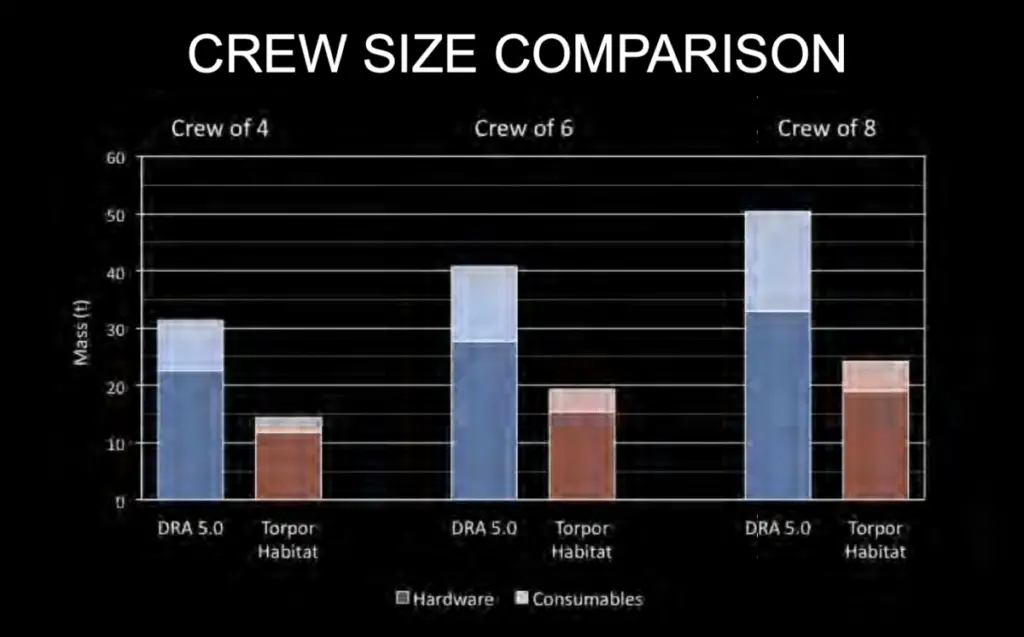
Image by SpaceWorks/NASA
Those interested in the final report of the project prepared for the NASA Innovative Advanced Concepts (NIAC) unit, which introduced all concepts and experimental data in detail, can find the document here.
No one can say for certain when we can or how close we are to achieving Hypersleep technology in all its science fiction glory, but one thing is for certain. We are working on it, and we won’t stop until it’s finished.
References
- Cryogenics – an overview | ScienceDirect Topics. (n.d.). Science Direct. Retrieved May 8, 2021, from https://www.sciencedirect.com/topics/chemical-engineering/cryogenics
- About Cryogenics. (n.d.). NIST. Retrieved May 8, 2021, from https://trc.nist.gov/cryogenics/aboutCryogenics.html
- R. (2018, November 27). Why is liquid nitrogen so cold? | Ask Dr. Universe | Washington State University. Ask Dr. Universe. https://askdruniverse.wsu.edu/2015/12/26/why-is-liquid-nitrogen-so-cold/#:%7E:text=Liquid%20nitrogen%20is%20so%20cold,liquid%20form%20here%20on%20Earth.&text=This%20compression%20causes%20the%20gas,the%20temperature%20of%20the%20lab.
- About Cryonics | Cryonics Institute. (n.d.). Cryonics Institute. https://www.cryonics.org/about-us/
- Frequently Asked Questions | Cryonics Institute. (n.d.). Cryonics Institute. https://www.cryonics.org/about-us/faqs/
- Cryopreservation. (2021, April 22). In Wikipedia. https://en.wikipedia.org/wiki/Cryopreservation
- Jang, T. H., Park, S. C., Yang, J. H., Kim, J. Y., Seok, J. H., Park, U. S., Choi, C. W., Lee, S. R., & Han, J. (2017). Cryopreservation and its clinical applications. Integrative Medicine Research, 6(1), 12–18. https://doi.org/10.1016/j.imr.2016.12.001
- Cryopreservation and Recovery of Mature Differentiated Neural Cells | Thermo Fisher Scientific – NL. (n.d.). ThermoFisher Scientific. https://www.thermofisher.com/nl/en/home/references/protocols/neurobiology/neurobiology-protocols/cryopreservation-and-recovery-of-mature-differentiated-neural-cells.html
- Ronson, J. (2017, May 8). How Cryogenic Sleep Works. Inverse. https://www.inverse.com/article/31267-cryogenic-sleep-hibernation-space-travel
- Torpor Inducing Transfer Habitat For Human Stasis To Mars. (2013, July 19). NASA. https://www.nasa.gov/content/torpor-inducing-transfer-habitat-for-human-stasis-to-mars/
